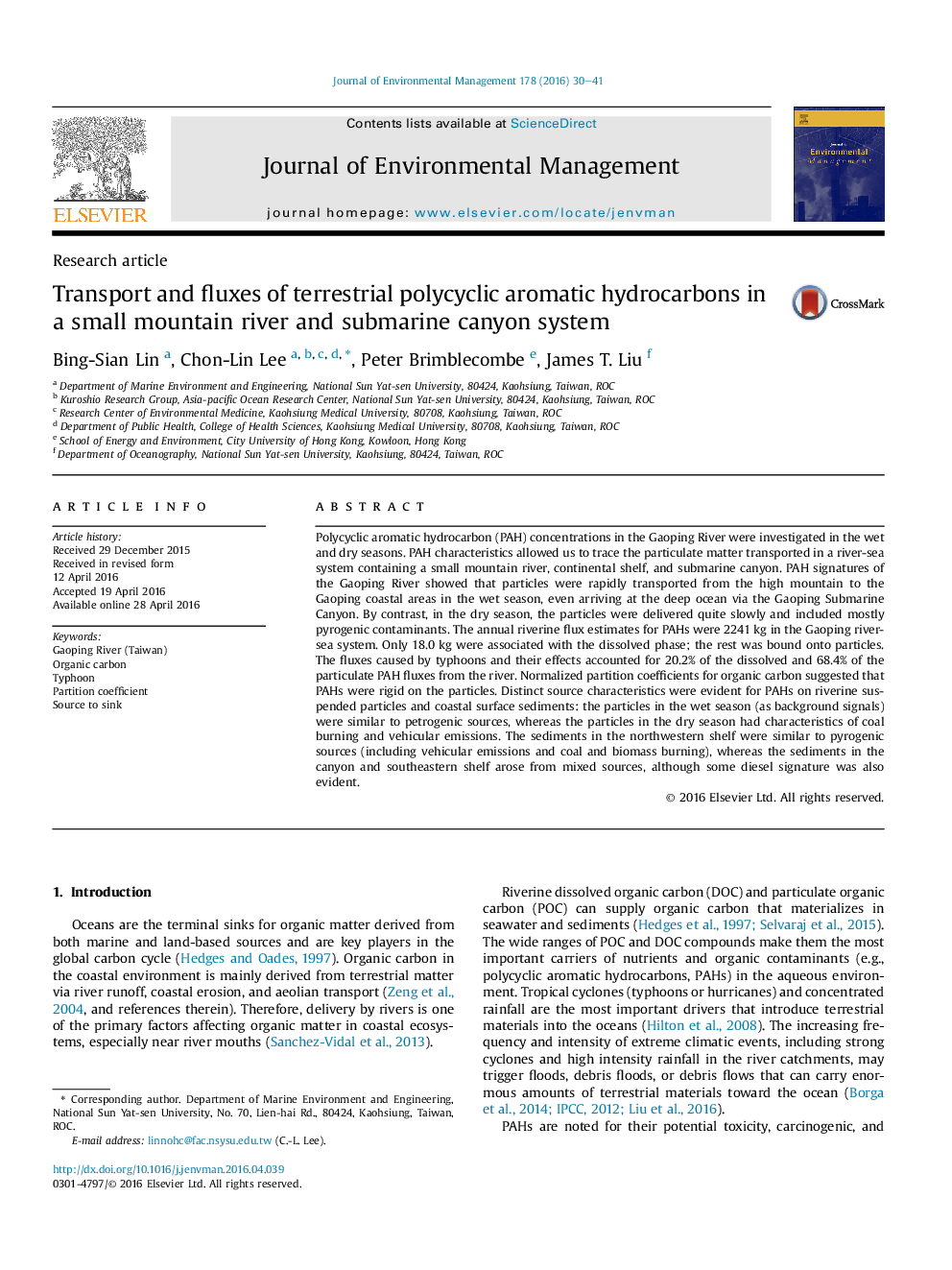| Article ID | Journal | Published Year | Pages | File Type |
|---|---|---|---|---|
| 1055358 | Journal of Environmental Management | 2016 | 12 Pages |
Abstract
Polycyclic aromatic hydrocarbon (PAH) concentrations in the Gaoping River were investigated in the wet and dry seasons. PAH characteristics allowed us to trace the particulate matter transported in a river-sea system containing a small mountain river, continental shelf, and submarine canyon. PAH signatures of the Gaoping River showed that particles were rapidly transported from the high mountain to the Gaoping coastal areas in the wet season, even arriving at the deep ocean via the Gaoping Submarine Canyon. By contrast, in the dry season, the particles were delivered quite slowly and included mostly pyrogenic contaminants. The annual riverine flux estimates for PAHs were 2241Â kg in the Gaoping river-sea system. Only 18.0Â kg were associated with the dissolved phase; the rest was bound onto particles. The fluxes caused by typhoons and their effects accounted for 20.2% of the dissolved and 68.4% of the particulate PAH fluxes from the river. Normalized partition coefficients for organic carbon suggested that PAHs were rigid on the particles. Distinct source characteristics were evident for PAHs on riverine suspended particles and coastal surface sediments: the particles in the wet season (as background signals) were similar to petrogenic sources, whereas the particles in the dry season had characteristics of coal burning and vehicular emissions. The sediments in the northwestern shelf were similar to pyrogenic sources (including vehicular emissions and coal and biomass burning), whereas the sediments in the canyon and southeastern shelf arose from mixed sources, although some diesel signature was also evident.
Related Topics
Physical Sciences and Engineering
Energy
Renewable Energy, Sustainability and the Environment
Authors
Bing-Sian Lin, Chon-Lin Lee, Peter Brimblecombe, James T. Liu,
